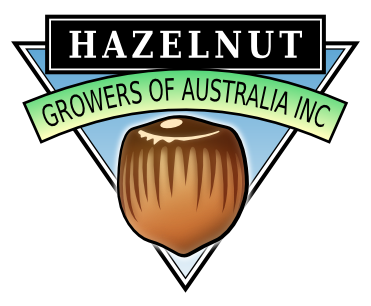The Australian Nut Industry Council (ANIC) collates information regarding the hazelnut industry in Australia relying on survey data collected from HGA members and advice from the HGA. The Agricultural Marketing Analysis Center in the US also compiles statistics on worldwide hazelnut production. The Department of Primary Industries, Parks, Water and Environment (DPIPWE) in Tasmania has undertaken a market analysis comparison for irrigated cropping alternatives. This analysis includes hazelnuts and may provide a useful business planning tool for new and existing growers. Government primary industry departments are a fantastic resource on general farming and orchard management advice, policy and regulations on food safety and other aspects of managing a property. See online information from VIC Department of Primary Industries, including Orchard Management, and Tasmanian Government: Farm Business Planning, and Farm Point. AgriFutures Australia and Plant Health Australia also provide useful online resources about growing hazelnuts.
Basic growing advice
Hazelnuts are wind-pollinated and self-incompatible: a tree cannot pollinise itself so compatible varieties are required. Successful pollination requires genetic compatibility as well as suitable flowing and pollen release times. Nurseries should be able to provide advice on compatible varieties and the hazelnut growers handbook has an extensive listing of suitable combinations and analysis on varieties to choose. Hazelnuts need to have chill hours over winter to ensure nut set so cool climates similar to Orange in New South Wales, Myrtleford in Victoria and Tasmania are suitable. The prime fact sheet from the New South Wales Department of Primary Industries is a useful resource.
Hazelnut trees take around 15 years to become mature and at this age typically take up 6mx6m, hence the predominance of this spacing in older orchards. Newer varieties of hazelnuts can be less spreading or pruned to allow closer spacing of 5mx6m. The option of double planting initially and removing trees once maturity is reached has become popular in Australia, US and Chile.
How to identify a good hazelnut whip
Hazelnuts are wind-pollinated and self-incompatible: a tree cannot pollinize itself so compatible varieties are required. Successful pollination requires genetic compatibility as well as suitable flowing and pollen release times. Nurseries should be able to provide advice on compatible varieties and the hazelnut growers handbook has an extensive listing of suitable combinations and analysis on varieties to choose. Hazelnuts need to have chill hours over winter to ensure nut set so cool climates similar to Orange in New South Wales, Myrtleford in Victoria and Tasmania are suitable. This fact sheet from the New South Wales Department of Primary Industries is a useful resource.
Hazelnut trees take around 15 years to become mature and at this age typically take up 6m x 6m, hence the predominance of this spacing in older orchards. Newer varieties of hazelnuts can be less spreading or pruned to allow closer spacing of 5m x 6m. The option of double planting 3m x 6m initially and removing trees once maturity is reached has become popular in Australia, US and Chile, but it entails greater capital input for planting and removal costs.
How to identify a good hazelnut whip
When buying nursery stock, look for an accredited nursery or member of the Hazelnut Growers of Australia. The majority of hazelnuts in Australia are available as a rooted sucker or ‘whip’ that is genetically the same as its parents, ensuring that it is true to type. They are supplied from early July through to late August. Ordering material a year before will guarantee supply.
Whips should be free from obvious pests and diseases, including bacterial blight, and measure size of greater than 10mm at the base of the whip and around 800mm high. Whips should be dormant and bare-rooted. Nurseries will often prune them to your requirements, though typically they are pruned to a single stem with no branches below 600mm.
Propagators of hazelnut stock for planting can be a great resource for new growers and often provide planting guidelines and advice. Details of propagators and specialised nurseries are available to HGA members.
